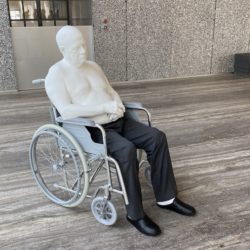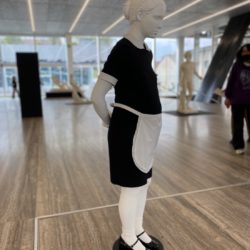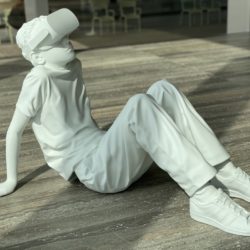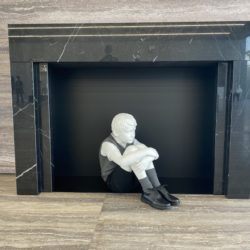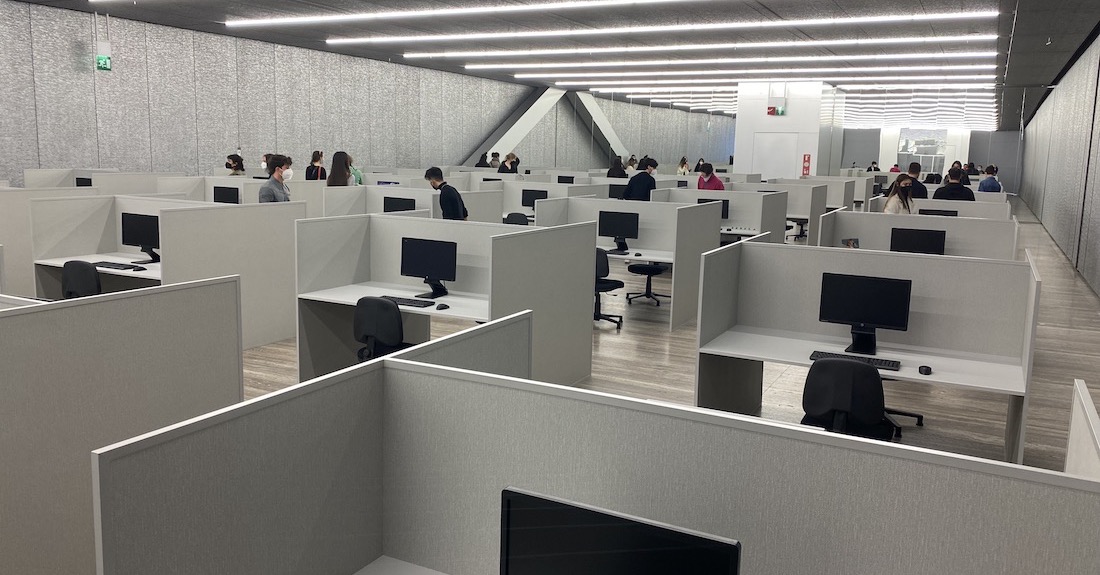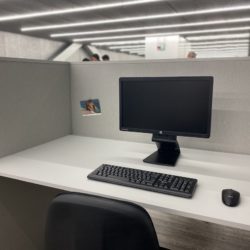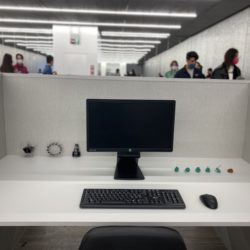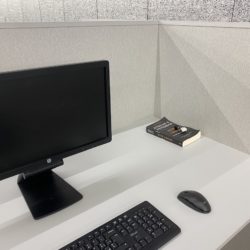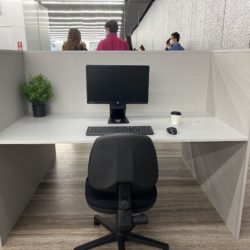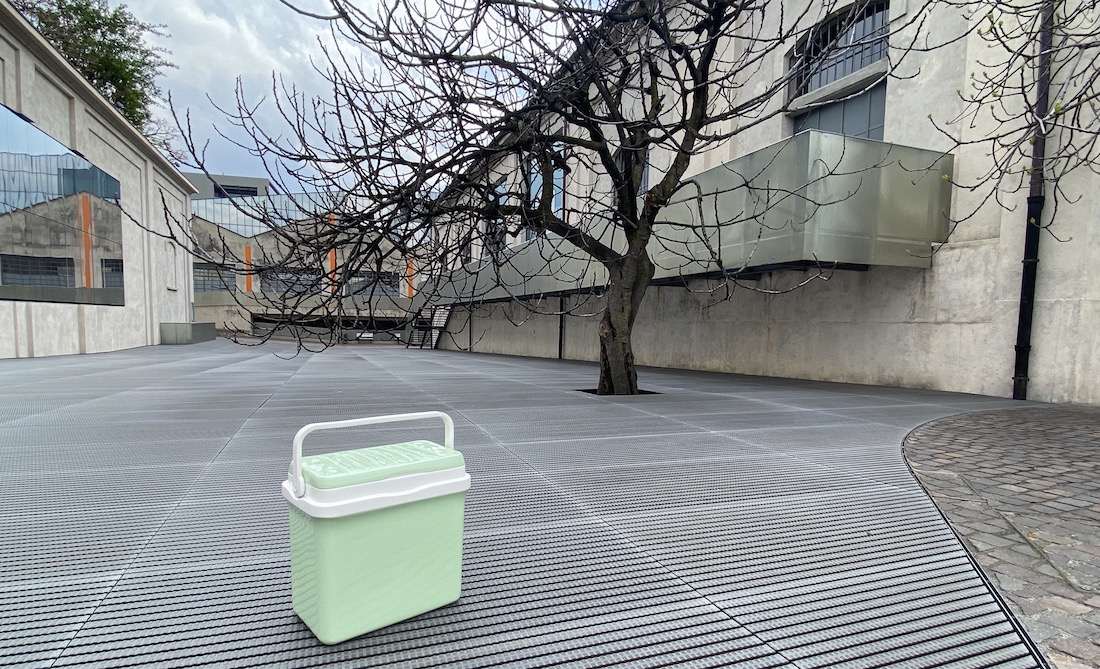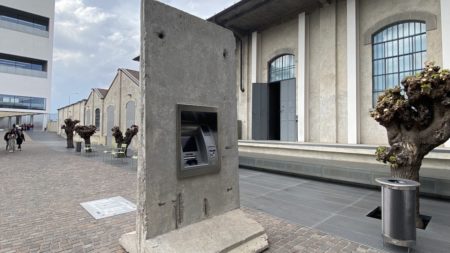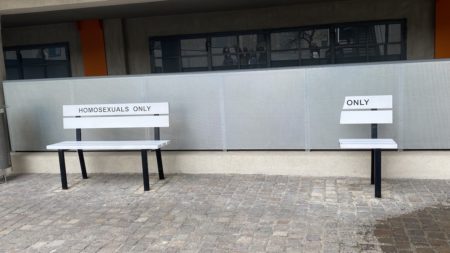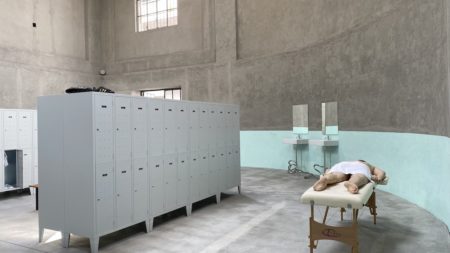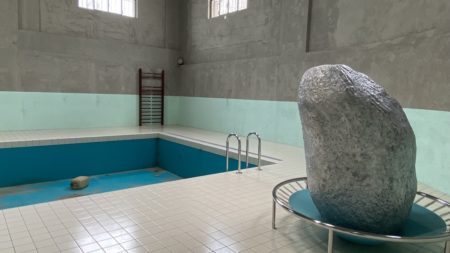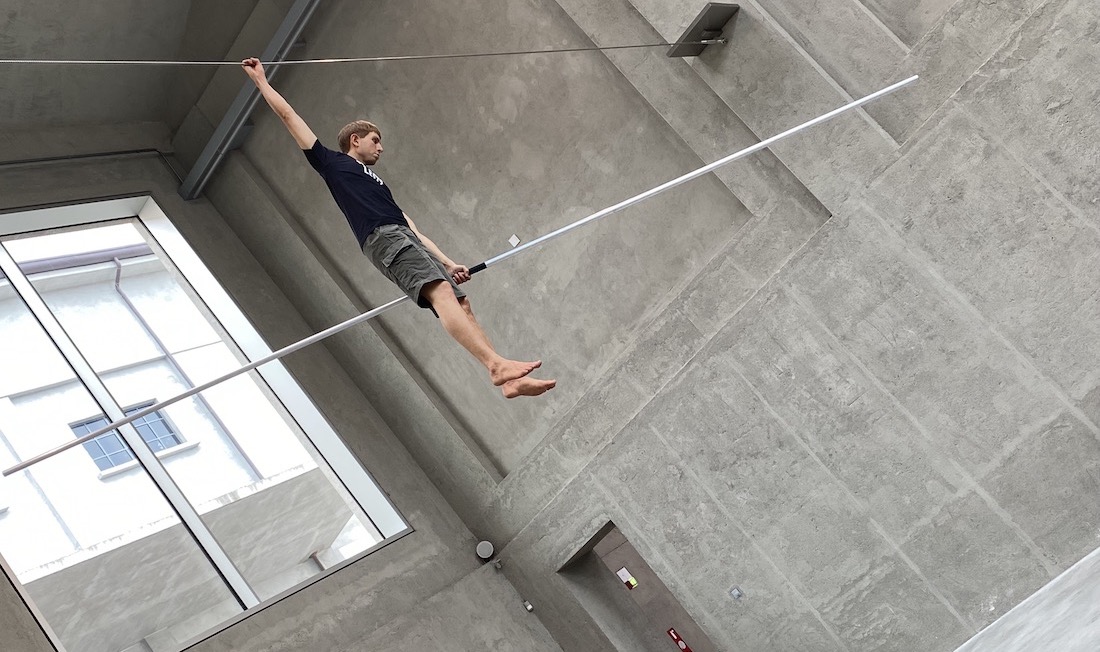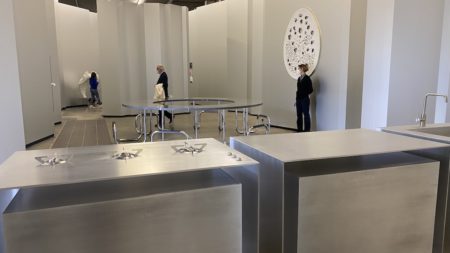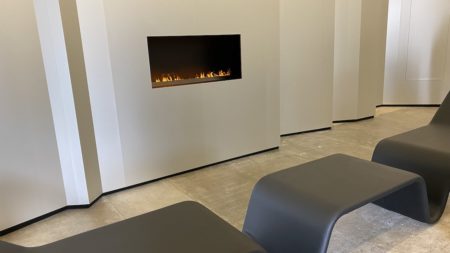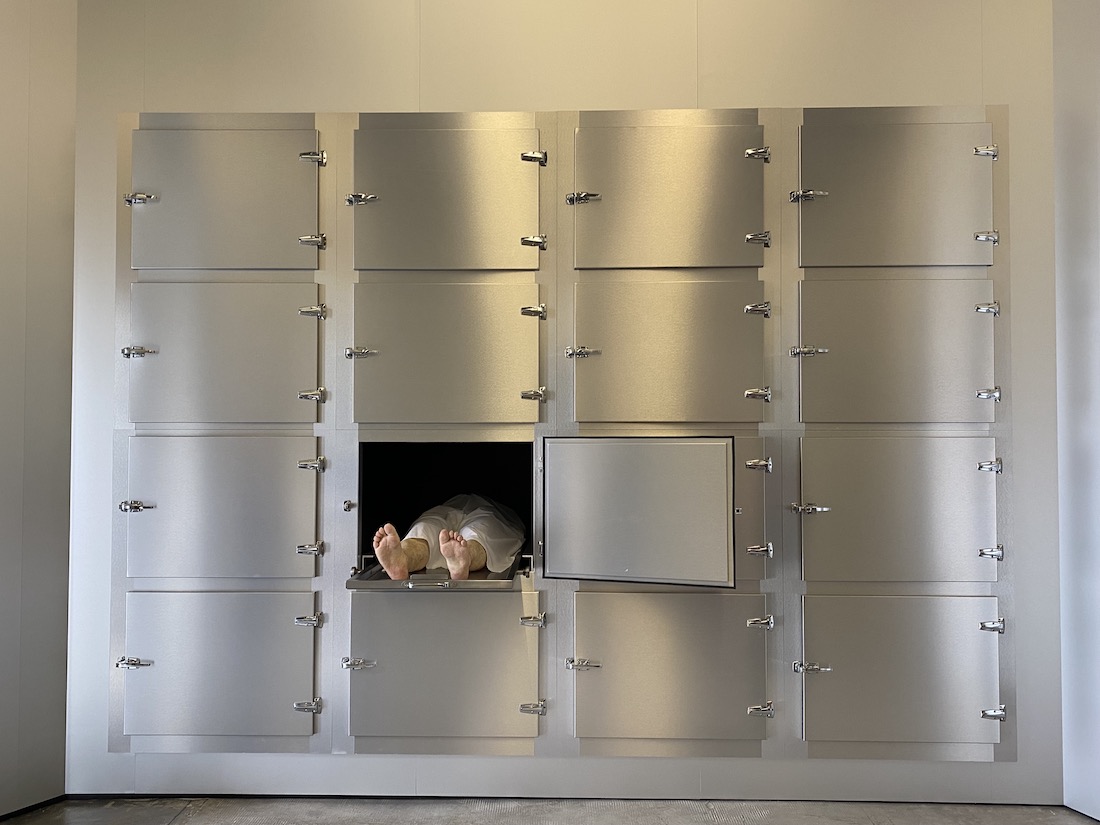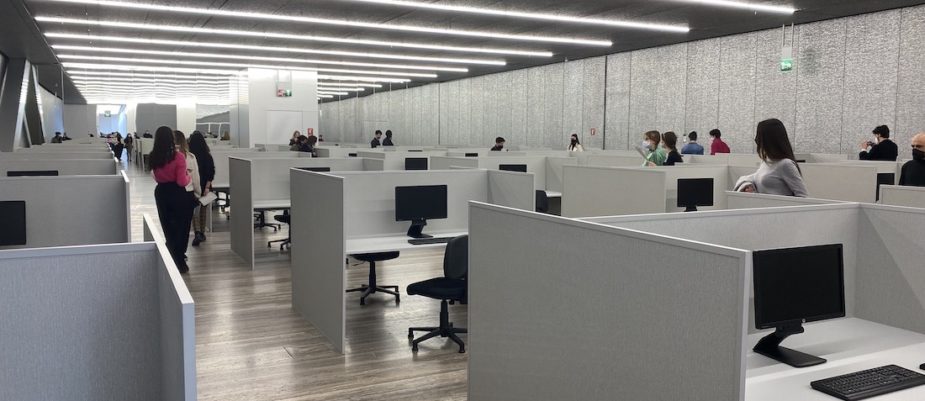
Architects like to talk about human centered spaces, but the new irreverent exhibition by Elmgreen & Dragset invites us to reflect on an opposite reality: in this post-industrial and post-pandemic phase the human body, our physical existence seems to become a superfluous element.
The perception of the body and the relationship between the body and the environment are the key topics of “Useless Bodies?” at the Fondazione Prada in Milan until 22 August 2022. Alienating, aseptic, achromatic and abandoned places – an office, a spa, a swimming pool, an apartment – emptied of human presence; disturbing atmospheres where the human body is revealed only as an intrusive, imperfect, poised or lifeless element.
That question mark in the title “Useless Bodies?” however, leaves a ray of hope …
This must-see exhibition – occupying three buildings and part of the courtyard of the Fondazione Prada in Milan- with site-specific installations by the Danish-Norwegian duo once again provoke strong emotions (such as the unforgettable pool with the collector’s corpse at the Venice Biennale in 2009 or the “caravan crash” breaking through the floor of Galleria Vittorio Emanuele in Milan in 2003).
The installation on the ground floor of the Podium almost seems to be the overture of this concert dedicated to the status of the body; exhumes traces of the 2015 Koolhas Serial Classic exhibition to create a counterpoint between the perfect bodies of classical statues and the “imperfect” ones of our daily life, for example a fat man in a wheelchair or a pregnant woman. This constellation of bodies also asks us to reflect on which and how many elements can change our space perception.
How does someone who observes the world through a virtual reality mask or through glass windows to the outside world? Who looks at the world from a high vantage point or hidden in a fireplace to seek protection?
But it is above all the distressing open space office – a double quote between Jacques Tati and Orson Welles – made up of endlessly repeated gray cubicles that brings us back to one of the hot topics of this moment.
The installation takes us through that kind of offices the lock down has made deserted and even after the pandemic few want to return.
In the total depersonalization of this workplace, in this dehumanization -more elegantly defined as “Clean Desk Policy”– the small signs that each body has left, bearing witness to traces of life, of desires, of dreams, are almost touching. Even in this case, these are imperfect signs: coffee stains or crumpled candy papers, a book (not surprisingly entitled “Beyond the Order”), small stationery lined up obsessively, a postcard, but also a miserable plant, finally a sign of life. “Much an absence of figures as there is a presence“, declare the authors.
The same desolation also connotes the settings in the courtyard that alter our imaginary (a forgotten picnic bag, an ATM integrated into a shred of the Berlin Wall, benches reserved for homosexuals, a car with two embraced male bodies).
The path continues inside of the Cisterna, from a rundown swimming pool to a squalid spa where a flabby body is waiting on a massage table;
from a ramshackle dressing room that invites us to browse among the lockers to the body of the tightrope walker hosting his balance and dangerously remaining poised in the void.
From the public spaces you pass to the North building set up as an ultra-minimalist apartment, the only moving presence is that of a bionic dog; an inhospitable and cold house that integrates a morgue into the living room.
Through these disturbing scenarios, the exhibition aims to reflect on the increasingly uselessness of our bodies and also to stimulate a debate on the consequences of this shift that “impacts every aspect of our lives: from our working conditions to health up to our interpersonal relationships”.
Text and photos by Renata Sias

